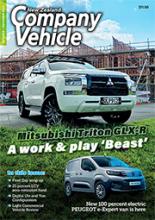Supplied by Teletrac Navman
Once upon a time, way back in 2008, 3G was the big new thing – it brought in the start of the internet at our fingertips.
In 2023, it’s outdated, unreliable, and slowing you and your business down. Now, new technologies are designed to work in 4G/5G and the network infrastructure is being converted, and mobile network providers are shuttering their 3G networks over the next year or so.
Any technology relying on 3G cannot be guaranteed to work after the close-down dates. This could include everything from your fleet management system, mobile phones right through to your point of sale/registers, Wi-Fi dongles and security systems.
It’s essential for your business to keep up with the latest technology to function as efficiently and cost-effectively as possible. Don’t wait until your fleet stutters and communication gets complicated – embrace modern and future-proofed technologies now.
What does upgrading to 4G and 5G mean for your business? The upgrade provides reduced latency and much faster data transfer rates.
Practically, this translates to more sophisticated telematics technology, allowing for advanced monitoring and management of vehicles, improved safety, cost reduction, and a better experience for your customers.
Modern mobile technology benefits
• Enhanced connectivity
The latest mobile technologies offer faster speeds, better bandwidth, and improved connectivity. This means rapid and reliable transmission of real-time data, regardless of traffic conditions or weather.
• Improved safety and security
Modern mobile technologies come equipped with advanced security measures, including enhanced encryption and authentication. These enhancements bolster the safety and security of the data and information being sent and received.
• Improved communication
4/5G networks deliver ultra-fast and highly reliable connectivity, which enhances communication across your entire organisation. This, in turn, reduces delays and boosts overall efficiency.
• Access to cutting-edge telematics and tracking solutions
Advanced AI-powered telematics systems have the capacity to process large volumes of data, converting them into valuable real-time insights for safety, efficiency, and compliance enhancements through the network. Some of these newer features require substantial bandwidth, making the transition to modern tracking units a practical choice for businesses aiming to implement high-bandwidth telematics services.
• Futureproof your business
Adopting newer mobile technologies ensures the longevity and resilience of your business, shielding it from device-related concerns, especially for fleets employing electronic logging devices like driver logbooks. These technologies offer increased functionality and more reliable connectivity, enabling the fast and dependable transmission of real-time data on traffic conditions, weather, and other factors. This empowers fleet managers to make more informed decisions.
Seamless transition top tips
To preserve the benefits of your telematics systems, it’s advisable to plan your transition to newer connected devices sooner rather than later. In the coming months, we recommend that fleet businesses:
• Assess business needs: Evaluate whether your business requires additional or different functionality. This is an opportunity to explore all available options in the market before committing to an upgrade.
• Take inventory of devices: Determine the number of devices that need to be migrated.
• Seek expert guidance: Contact your fleet service provider to gain insights into timeframes, contemporary telematics, and network carrier specifications.
• Schedule vehicle downtime: Plan for the necessary vehicle downtime to minimise disruption to your business. Create a transition plan which will not only guide your business effectively but also your workforce through the upgrade, including essential training.
• Develop a budget: Schedule hardware replacements to align with the availability of financial resources. There’s no need to replace all units simultaneously.
For businesses with large fleets of vehicles, preparing for the transition from 3G to newer technology is essential.
While upgrading technology can pose challenges, it is a crucial step to establish a solid foundation for the future growth of your business.
Although the transition may not be as simple as flipping a switch, the time and effort invested will mean you avoid potential issues such as telematic system failures, which could block critical data flow needed for safety, compliance, and operational efficiency.
Preparing for a seamless transition ensures your business remains competitive and capable of delivering high-quality services to your customers in today’s fast-evolving technology landscape.
Additionally, although adopting newer and more efficient technology entails an initial financial outlay, businesses typically recover these expenses quickly through improved fleet efficiency and enhanced system functionality.
So, when you’re considering the broader perspective of your business operations, taking this step sooner rather than later is the right move for both your business and its future.
Find more information about the 3G shutdown on your network provider’s website One NZ, 2degrees or Spark.



